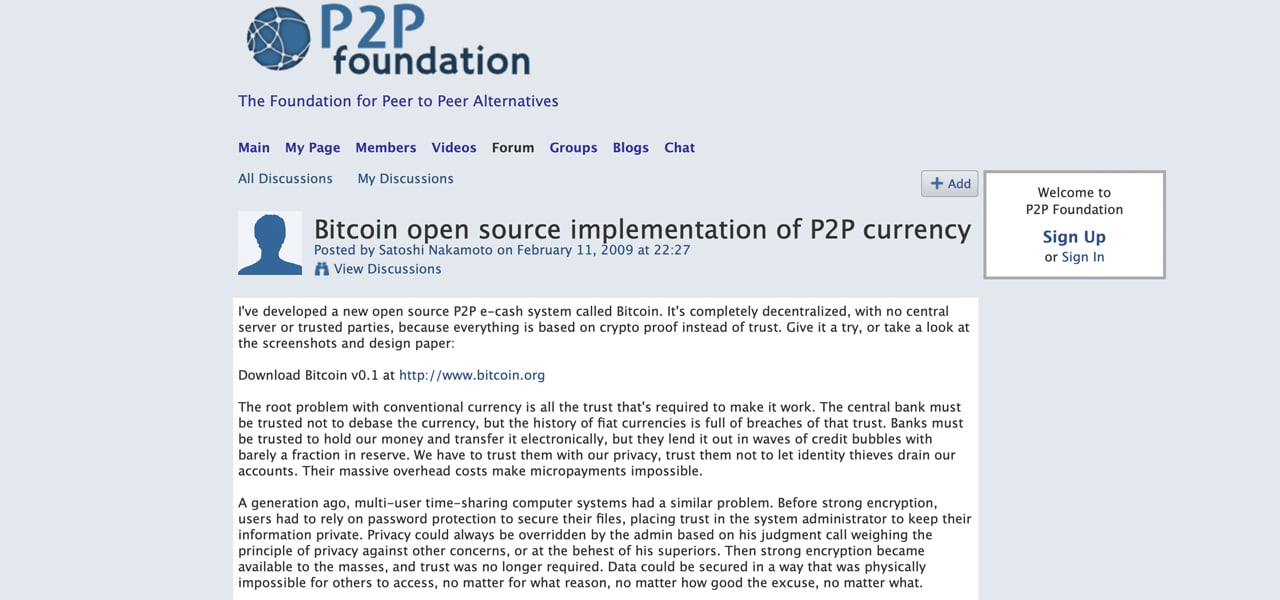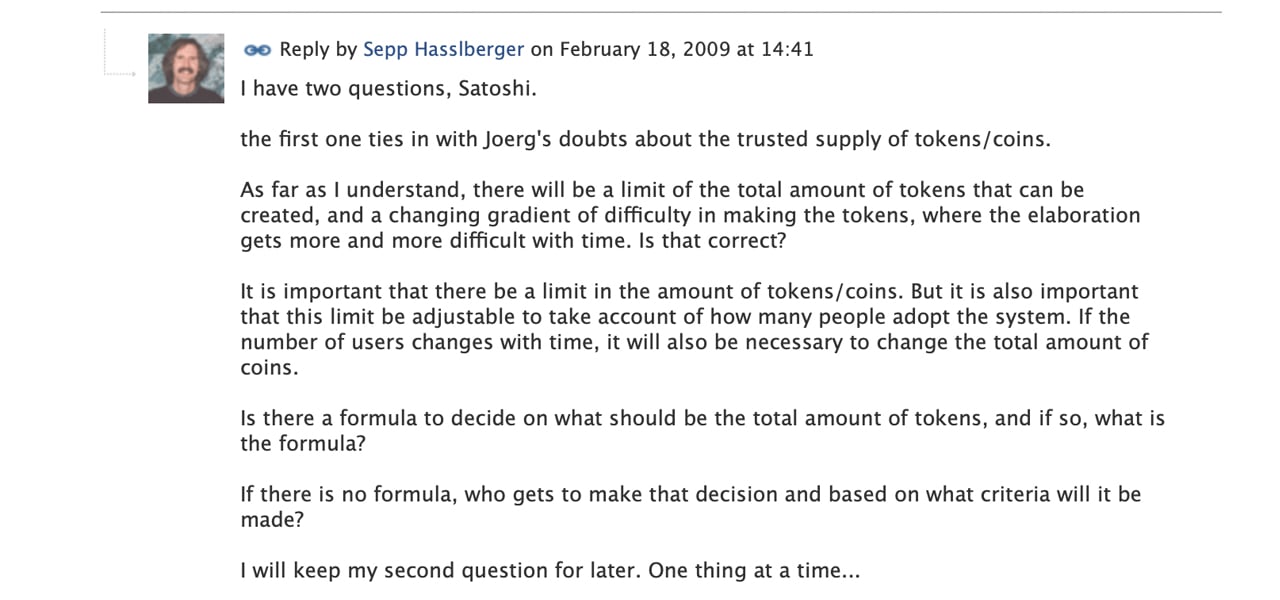
13 years ago today, the creator of the Bitcoin network, Satoshi Nakamoto published the inventor’s first forum post on the P2P Foundation website. The forum post called “Bitcoin open source implementation of P2P currency” introduced the e-cash system to the members of the advocacy and research forum focused on peer-to-peer dynamics in society.
Forum Posts 1 & 3 February 2009. Introducing Bitcoin
There was three occasions in February 2009 when Satoshi Nakamoto introduced the inventor’s Bitcoin white paper and open source codebase to the P2P Foundation forum members. This was the first public announcement by the Bitcoin creator using the P2P Forum. Before these events, Nakamoto used the metzdowd.com email system to connect to his cryptography mailing list.

The introductory forum post is quite fascinating, and the inventor also leaves a link to the software’s first version on the forum as well. “I’ve developed a new open source P2P e-cash system called Bitcoin,” Nakamoto wrote 13 years ago today. “It’s completely decentralized, with no central server or trusted parties, because everything is based on crypto proof instead of trust. Give it a try, or take a look at the screenshots and design paper,” the creator added.
Nakamoto is extremely descriptive in the first forum post, and Bitcoin’s inventor explains the issue with conventional currencies. “The root problem with conventional currency is all the trust that’s required to make it work,” Nakamoto wrote that day. “The central bank must be trusted not to debase the currency, but the history of fiat currencies is full of breaches of that trust. Banks must be trusted to hold our money and transfer it electronically, but they lend it out in waves of credit bubbles with barely a fraction in reserve.”
Bitcoin’s inventor further stressed:
Trust them to protect our privacy. We also need to be able to trust that they won’t let identity thieves steal our money. Micropayments are impossible due to their huge overhead costs.
Nakamoto Responds: ‘I Think This Is the First Time We’re Trying a Decentralized, Non-Trust-Based System’
Satoshi’s first forum post is clear to anyone who has read it. He wants people to test Bitcoin networks in their early days. Nakamoto’s forum post did not get a reply until the very next day, as an individual named Sepp Hasslberger was the first to respond to Nakamoto’s first P2P Foundation thread.
“Great stuff,” Hasslberger wrote at the time. “This is the first real innovation in money since the Bank of England started to issue its promissory notes for gold in the vaults, which then became known as banknotes. An open-source currency is a great idea. A bit like Google becoming the default search engine for many of us,” Hasslberger added. A few other individuals in the post talked about “old Chaumian central stuff” and e-currency projects such as e-gold that failed in the past.
Satoshi responded to a few questions in the thread and noted that the “old Chaumian central mint stuff,” was the only thing available at the time. Bitcoin’s inventor reminded the P2P Foundation members that the Bitcoin protocol was decentralized and different. “A lot of people automatically dismiss e-currency as a lost cause because of all the companies that failed since the 1990’s,” Nakamoto replied to one of the thread’s responses on February 15, 2009. “I hope it’s obvious it was only the centrally controlled nature of those systems that doomed them. I think this is the first time we’re trying a decentralized, non-trust-based system,” the cryptocurrency’s creator added.

Nakamoto returned to this thread on February 18th to address multiple questions posed by Sepp Hasslberger. In response to Hasslberger’s questions, Nakamoto laid out three interesting features the Bitcoin network showcased and insisted that the coins would be scarce. Nakamoto stated:
The global distributed database is maintained by the majority of users. They can add to it by their consent based upon a set rules. [One] — Whenever someone finds proof-of-work to generate a block, they get some new coins. [Two] — The proof-of-work difficulty is adjusted every two weeks to target an average of 6 blocks per hour (for the whole network). [Three] — The coins given per block is cut in half every 4 years — You could say coins are issued by the majority. These coins are only issued in a predetermined, limited quantity.
It’s safe to say that Satoshi Nakamoto’s e-cash system caught on and after 13 years, 18,954,937 bitcoins have been issued out of the maximum supply of 21 million so far. Bitcoin’s (BTC) market capitalization is currently worth more than $800 billion and since its inception on January 3, 2009, the network has been functional with a 99.98713391230% uptime rating. Nakamoto’s invention has also sparked the creation of thousands of crypto coins, and today there’s 12,523 crypto assets within the crypto economy.
Let us know your thoughts about Satoshi Nakamoto’s first post on the P2P Foundation Forum. We’d love to hear your opinions on the subject below in comments.
Image creditShutterstock. Pixabay. Wiki Commons